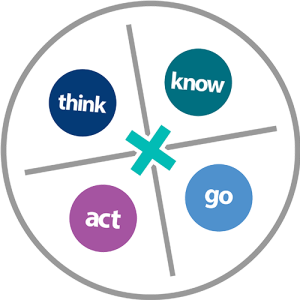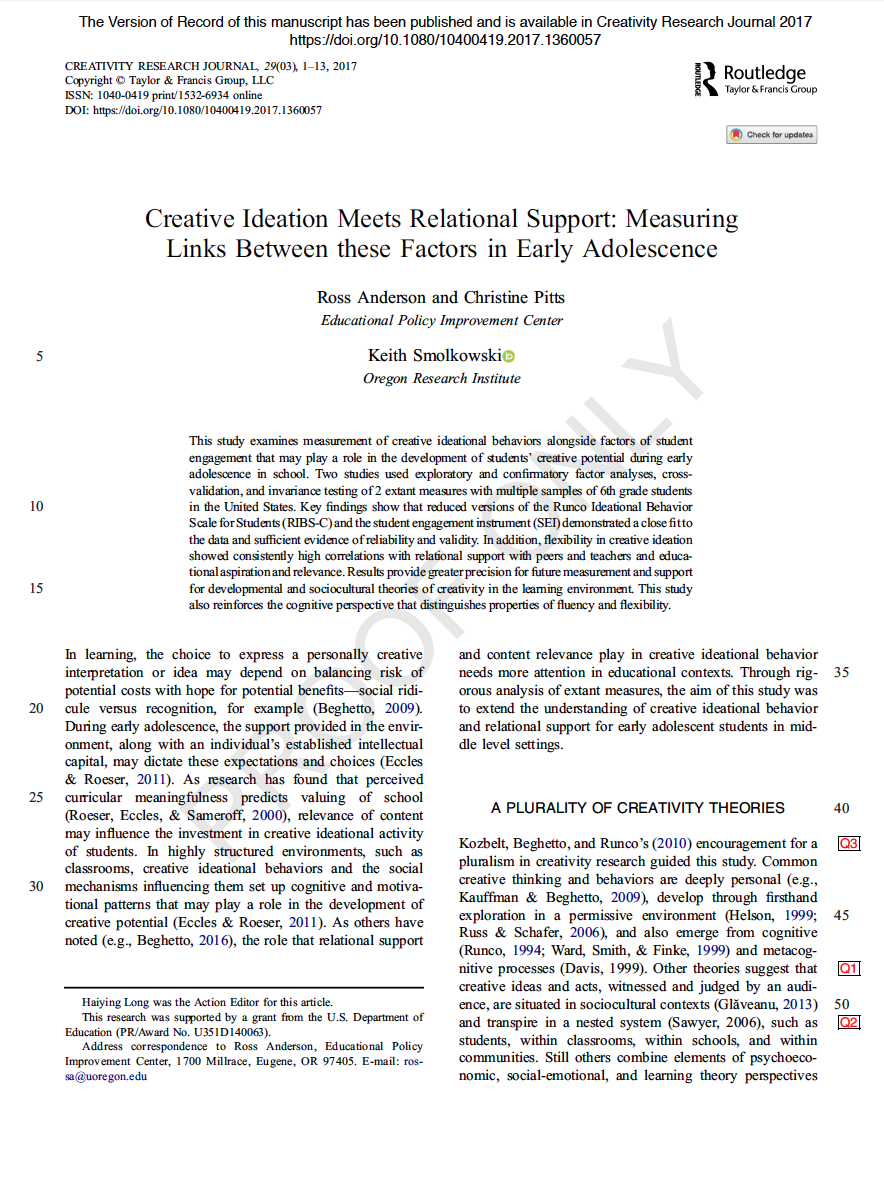This study examines measurement of creative ideational behaviors alongside factors of student engagement that may play a role in the development of students’ creative potential during early adolescence in school. Two studies used exploratory and confirmatory factor analyses, crossvalidation, and invariance testing of 2 extant measures with multiple samples of 6th grade students 10 in the United States. Key findings show that reduced versions of the Runco Ideational Behavior Scale for Students (RIBS-C) and the student engagement instrument (SEI) demonstrated a close fit to the data and sufficient evidence of reliability and validity. In addition, flexibility in creative ideation showed consistently high correlations with relational support with peers and teachers and educational aspiration and relevance. Results provide greater precision for futuremeasurement and support 15 for developmental and sociocultural theories of creativity in the learning environment. This study also reinforces the cognitive perspective that distinguishes properties of fluency and flexibility.
In learning, the choice to express a personally creative interpretation or idea may depend on balancing risk of potential costs with hope for potential benefits—social ridicule versus recognition, for example (Beghetto, 2009). During early adolescence, the support provided in the environment, along with an individual’s established intellectual capital, may dictate these expectations and choices (Eccles & Roeser, 2011). As research has found that perceived curricular meaningfulness predicts valuing of school (Roeser, Eccles, & Sameroff, 2000), relevance of content may influence the investment in creative ideational activity of students. In highly structured environments, such as classrooms, creative ideational behaviors and the social mechanisms influencing them set up cognitive and motivational patterns that may play a role in the development of creative potential (Eccles & Roeser, 2011). As others have noted (e.g., Beghetto, 2016), the role that relational support and content relevance play in creative ideational behavior needs more attention in educational contexts. Through rigorous analysis of extant measures, the aim of this study was to extend the understanding of creative ideational behavior and relational support for early adolescent students in middle level settings.
Authors: Ross Anderson, Christine Pitts, Keith Smolkowski
The Version of Record of this manuscript has been published and is available in Creativity Research Journal 2017 https://doi.org/10.1080/10400419.2017.1360057
Creative-Ideation-Meets-Relational-Support.pdf (1208 downloads )




